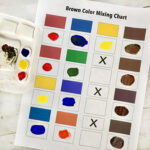How Long to Smoke Chicken Breast at 225°F
Cooking Time
When smoking chicken breast at 225°F, the cooking time can vary based on the thickness of the meat. Generally, you can expect the following:
- Thin Chicken Breasts: Approximately 1 to 1.5 hours
- Average Thickness: About 2 to 3 hours
- Thick Chicken Breasts: Up to 3 hours
It’s essential to monitor the internal temperature rather than strictly adhering to time, as thickness and starting temperature can significantly affect cooking duration.
Internal Temperature
The recommended internal temperature for smoked chicken breast is 165°F. However, some sources suggest that cooking to an internal temperature of 150°F and holding it there for 5 minutes is sufficient to ensure safety while retaining moisture. This method relies on the principle of time at temperature, allowing for a juicier result without compromising food safety.
Summary Table
| Parameter | Details |
|---|---|
| Smoking Temperature | 225°F |
| Cooking Time | 1 to 3 hours (depending on thickness) |
| Safe Internal Temperature | 165°F |
| Alternative Internal Temp | 150°F (hold for 5 minutes) |
| Best Wood for Smoking | Apple, cherry, or pecan |
Preparation Steps
- Preheat the Smoker: Set your smoker to 225°F. If using a pellet grill, ensure it’s adequately heated.
- Prepare the Chicken:
- Use boneless, skinless chicken breasts for best results.
- Optionally, brine the chicken for 4 hours to enhance moisture retention.
- Apply a rub or seasoning of choice, ensuring even coverage.
- Smoking Process:
- Place the chicken breasts directly on the smoker grates.
- Smoke until the internal temperature reaches 165°F, checking periodically with a meat thermometer.
- If smoking to 150°F, ensure to hold it at that temperature for 5 minutes.
- Resting Period:
- Once done, remove the chicken from the smoker and tent it with foil.
- Let it rest for 10-20 minutes to allow juices to redistribute.
- Serving: Slice and serve the smoked chicken breast with your favorite sides.
FAQ Section
How do I know when the chicken is done?
Use an instant-read meat thermometer to check the internal temperature. The chicken is done when it reaches 165°F in the thickest part.
Should I flip the chicken while smoking?
No, flipping is not necessary when smoking chicken. The heat circulates around the meat, cooking it evenly.
What wood is best for smoking chicken?
Mild hardwoods like apple, cherry, or pecan are ideal, as they impart a subtle smoky flavor without overpowering the chicken.
Can I smoke chicken breasts without brining?
Yes, brining is optional. While it can enhance moisture, many find that properly smoking chicken without brining yields excellent results.
What if my chicken breasts are thick?
For thicker breasts, expect a longer cooking time, potentially up to 3 hours. Always rely on temperature rather than time.
Is it safe to eat chicken cooked to 150°F?
Yes, if held at that temperature for 5 minutes. However, the USDA recommends cooking chicken to 165°F for immediate safety.
Should I brine the chicken before smoking?
Brining is not mandatory, but it can help retain moisture and enhance flavor. Soak the chicken in a saltwater solution for 4 hours in the refrigerator before smoking. Rinse and pat dry the chicken before applying the rub or seasoning.
Can I use a dry rub instead of brining?
Absolutely! A dry rub can add flavor and help create a nice crust on the chicken. Apply the rub evenly over the chicken breasts before placing them in the smoker.
How do I know if the chicken is safe to eat?
Always use a meat thermometer to check the internal temperature. The chicken is safe to eat when it reaches an internal temperature of 165°F in the thickest part. For a juicier result, you can cook it to 150°F and hold it there for 3 minutes.
Can I smoke chicken breasts with the skin on?
Yes, you can smoke chicken breasts with the skin on. However, keep in mind that the skin may not crisp up as much as when roasted in the oven. If you prefer crispy skin, consider removing it before smoking or broiling the chicken briefly after smoking.
How do I store leftover smoked chicken?
Allow the smoked chicken to cool completely before storing. Place it in an airtight container or wrap it tightly in foil or plastic wrap. Refrigerate for up to 4 days or freeze for up to 3 months.
Can I use a smoker box in my grill?
Yes, you can use a smoker box or pouch filled with wood chips in a gas or charcoal grill to achieve a smoky flavor. Place the smoker box directly on the heat source and close the lid. Adjust the vents to maintain a temperature of 225-250°F.
How do I clean my smoker after use?
Allow the smoker to cool completely before cleaning. Remove the grates and empty the ash or drip tray. Wipe down the interior with a damp cloth or paper towels. Avoid using harsh chemicals or abrasives, as they can damage the smoker’s surface.
Can I marinate the chicken before smoking?
Yes, you can marinate the chicken before smoking. Marinating can add flavor and moisture to the meat. However, be aware that marinades containing sugary ingredients may burn or caramelize during the smoking process.
How do I prevent the chicken from drying out?
To prevent the chicken from drying out, avoid overcooking. Use a meat thermometer to monitor the internal temperature and remove the chicken from the smoker once it reaches 165°F (or 150°F if holding for 3 minutes). Brining or marinating the chicken can also help retain moisture.
Can I smoke frozen chicken breasts?
It’s best to thaw the chicken breasts completely before smoking. Smoking frozen chicken may result in uneven cooking and longer cooking times. Thaw the chicken in the refrigerator for 24-48 hours before smoking.
How do I add more smoke flavor?
To enhance the smoky flavor, try using a combination of wood chips or chunks. Experiment with different types of wood, such as apple, cherry, or pecan, to find your preferred flavor profile. You can also try soaking the wood chips in water for 30 minutes before adding them to the smoker to create more smoke.
Can I use a meat probe to monitor the temperature?
Yes, using a meat probe or digital thermometer with a probe can make monitoring the internal temperature easier. Insert the probe into the thickest part of the chicken breast, ensuring it doesn’t touch any bone. The probe will continuously display the internal temperature, allowing you to track the cooking progress without opening the smoker frequently.
How do I prevent the chicken from sticking to the grates?
To prevent the chicken from sticking to the smoker grates, make sure the grates are clean and lightly oiled before preheating the smoker. You can also use a grill basket or foil pan to smoke the chicken, making it easier to transfer and prevent sticking.
Can I baste the chicken while smoking?
Basting the chicken while smoking is not recommended, as it can lower the temperature inside the smoker and affect the smoking process. If you want to add extra flavor, consider brushing the chicken with a glaze or sauce during the last 30 minutes of cooking.
How do I know if my smoker is producing enough smoke?
A properly functioning smoker should produce a thin, blue smoke. If the smoke is thick and white, it may indicate that the wood chips or chunks are smoldering rather than burning efficiently. Adjust the vents or dampers to increase airflow and create a cleaner smoke.
Can I use a different cooking method if I don’t have a smoker?
Yes, you can achieve similar results by using a grill or oven. For grilling, set up the grill for indirect heat and add wood chips or chunks to the coals to create smoke. Cook the chicken at 225-250°F, monitoring the internal temperature. For oven-roasting, place the chicken on a wire rack set over a baking sheet and roast at 325°F, occasionally basting with a smoky barbecue sauce.
Can I use a different temperature?
While 225°F is recommended for smoking chicken, some prefer 250°F for a quicker cook with a slightly different texture.For more detailed guidance on cooking poultry, you can refer to the USDA’s official guidelines on poultry cooking temperatures USDA Poultry Guidelines.



